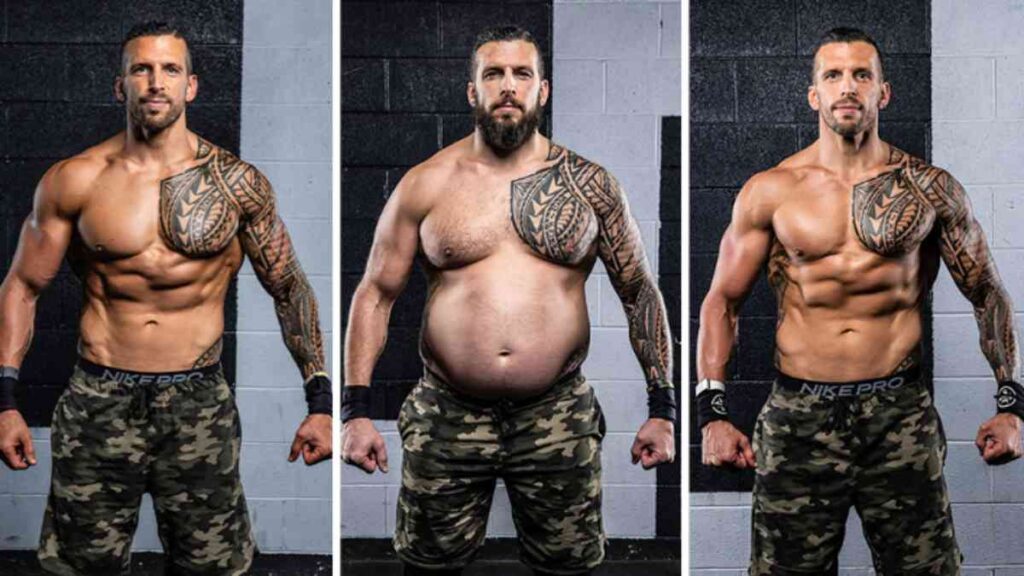Introduction
Understanding what 60 pounds of fat looks like can help you visualize your weight loss goals or grasp how much body fat affects your health. Many people struggle to picture this amount, which makes tracking progress confusing or discouraging. In this guide, you will learn exactly what 60 pounds of fat looks like through easy comparisons and clear explanations. This will help you stay motivated and informed as you work toward a healthier body.
What Does 60 Pounds of Fat Look Like in Real Life
Visualizing 60 pounds of fat can be tricky because fat volume takes up more space than muscle does. To give you a practical idea:
-
60 pounds of fat is roughly the size of a medium large watermelon or about three 20-pound bowling balls.
-
It can also look like a large sack filled with cotton or a full suitcase.
-
Fat is less dense than muscle, so 60 pounds of fat occupies more volume compared to 60 pounds of muscle.
How Fat Appears on the Body
Where fat accumulates depends on many factors like genetics, age, gender, and lifestyle. Common areas include:
-
Abdomen and belly (creating a noticeable belly pooch or tire belly)
-
Thighs and hips (often called saddle bags)
-
Arms and back
Carrying 60 pounds of excess fat will noticeably change your body shape and can impact your overall health, especially if stored around vital organs.
Why Knowing What 60 Pounds of Fat Looks Like Matters
Being able to visualize this amount of fat helps you:
-
Set realistic weight loss goals
-
Understand how small changes in weight reflect on your body
-
Stay motivated during your fitness journey
-
Recognize the health risks of excess body fat
Comparing Fat to Muscle: Why Volume Matters
Muscle is denser and takes up less space than fat. For example:
-
60 pounds of muscle looks much smaller and more compact than 60 pounds of fat.
-
This is why someone can look lean and toned even at a higher weight if they have more muscle mass.
Understanding this helps explain why the scale is not the only measure of health or fitness progress.
How to Measure Body Fat More Accurately
Instead of relying only on weight, consider these methods:
-
Body fat calipers measure skinfold thickness
-
Bioelectrical impedance scales estimate fat percentage
-
DEXA scans provide detailed body composition analysis
Using these tools gives a clearer picture of your fat loss progress rather than just pounds lost.
Effects of Carrying Excess Fat on Health
Carrying 60 pounds of extra fat can increase the risk of:
-
Heart disease
-
Type 2 diabetes
-
High blood pressure
-
Joint problems
Reducing excess fat improves energy, mood, and overall quality of life.
Tips for Losing 60 Pounds of Fat Safely
Losing 60 pounds of fat is a gradual process. Here are practical steps:
-
Follow a balanced diet rich in whole foods
-
Engage in regular physical activity combining cardio and strength training
-
Get adequate sleep and manage stress
-
Stay hydrated and track your progress with photos and measurements
Consistency is key for long-lasting fat loss and health benefits.
Conclusion
Now you have a clear picture of what 60 pounds of fat looks like and why understanding this is important for your health journey. Remember, focusing on fat loss rather than just weight loss will give you better results and improved wellbeing. Use the tips shared here to guide your progress and celebrate every milestone along the way.
Frequently Asked Questions (FAQ)
What does 60 pounds of fat look like in volume?
It is roughly the size of a medium watermelon or three bowling balls, taking up more space than muscle of the same weight.
How long does it take to lose 60 pounds of fat?
Healthy weight loss is about 1-2 pounds per week, so it may take 6 months to a year or more depending on your plan.
Is 60 pounds of fat dangerous for my health?
Carrying excess fat increases risk for many diseases, so losing fat improves your overall health significantly.
Can muscle weigh more than fat?
Yes, muscle is denser than fat and weighs more in a smaller volume.
How do I know if I am losing fat or just water weight?
Using body measurements, progress photos, and body fat tests helps differentiate fat loss from water weight.
What exercises help burn fat fastest?
Combining cardio like walking, running, or cycling with strength training builds muscle and boosts fat loss.
Does losing 60 pounds of fat improve energy levels?
Yes, reducing excess fat typically leads to increased energy, better mood, and improved sleep.
Should I focus on fat loss or weight loss?
Fat loss is a healthier goal because it improves body composition and overall wellness more than just losing weight on a scale.
